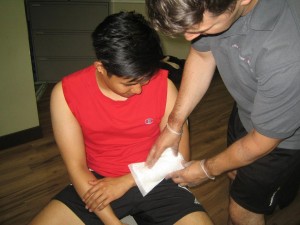Shave excision is a procedure used to remove growths such as tumors, lesions and moles on the skin. The growth is taken away with a sharp razor and soothed with an antibiotic ointment to promote healing. Oftentimes, an electrode is used to even out the edges and make the scar less noticeable. The procedure is usually done with local anesthesia to prevent the individual from experiencing pain. Once the growth is removed, it is sent to the laboratory for analysis to determine if it is malignant.
Reasons for shave excision
If there is a skin growth, the doctor might recommend a shave excision. The procedure is simple and costs less than the full-thickness skin excision which is an invasive procedure that requires the application of sutures.
A shave excision no longer needs stitches and the scar produced is less apparent than a scar caused by a full-thickness skin excision.
After a shave excision

In most cases, there is discomfort or a burning sensation on the area where the growth was removed. The individual can take over-the-counter pain medications such as ibuprofen or acetaminophen every 4 hours for the first few days after the procedure.
Remember to expect some scarring and it will be red in color for a few weeks but will gradually lighten. Just take note that the healing can be slow process. There are ways to lighten the scar which includes the following:
- Apply a topical silicone gel
- Use petroleum-based ointments
- Apply vitamin A cream
When the individual is exposed to the sun, he/she should cover the surgical site with a bandage. Take note that sunburn can lead to the permanent darkening of the wound, thus making the scar noticeable. If the scarring appears excessive, it is best to consult a doctor.
Complications
Even though infection rarely occurs, it is best that you know the signs to watch out for. You can enroll in a first aid course so that you will learn the steps to take when dealing with infection. (Read here for more information on the courses offered). Once the following symptoms are present, it is best to consult a doctor as soon as possible.
- Extreme tenderness
- Drainage of pus from the wound site
- Swelling or increasing redness
In some cases, bleeding can also occur. Once this occurs, you have to press on the wound using sterile bandage or dressing in a firm manner for 20-30 minutes. In case the wound bleeds for more than 30 minutes, it is best to seek medical attention. Oftentimes, growths or tumors can grow back after the procedure. Once this occurs, it is important to consult the doctor.
Test results
The doctor will inform the individual regarding the laboratory results. The growth can be identified as benign or non-cancerous or malignant (cancerous). The usual forms of benign growths include skin tags, angiofibroma and dermatofibroma.
